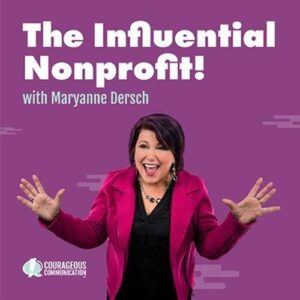
March 21, 2025
How Giving Back Can Boost Your Tax Refund
See original piece on GOBanking Rates
Donating to charity can be about more than giving back to your community. While the IRS has established charitable giving guidelines, taxpayers can maximize their deductions and increase their tax refund by making strategic contributions to their favorite causes.
Here’s how giving back can boost your tax refund.
How To Give
Charitable donations can provide valuable tax advantages for individuals and families who itemize their deductions.
Donations made to qualified 501(c)(3) nonprofits can be deducted from taxable income and reduce overall tax liability. In addition, many states offer additional tax credits for charitable contributions.
“The tax deduction allows them to give more to the charity than they would without the deduction,” said Matt Nash, executive director of The Blackbaud Giving Fund. “Financially, it doesn’t make sense to give away a dollar so you can save 40 cents on your taxes. You should give to a charity to support a cause. A side benefit is the tax deduction.”
Types of Donations
Cash contributions can usually be deducted up to 60% of the adjusted gross income (AGI), while noncash donations, such as stocks or real estate, have lower limits. Donating appreciated assets like stocks directly to charity allows taxpayers to avoid paying capital gains tax while still receiving a deduction for the asset’s fair market value.
“If you bought a stock for $10, and it is now valued at $100, the deduction received for donating the stock is $100,” Matt Nash said. “If you sold the stock for $100, you’d pay capital gains tax on the $90 profit. What remains would be less money to donate to charity and, therefore, a smaller deduction from your taxes.”
Another option is cryptocurrency. “One of the strongest appreciating assets this year has been cryptocurrency, which many nonprofits are equipped to accept as donations,” Matt Nash said.
In addition, taxpayers can create a donor-advised fund (DAF) or a charitable giving vehicle that allows individuals to make tax-deductible donations to a fund. The fund is then invested for tax-free growth, and the donor can later recommend grants to qualified charities of their choice, per Fidelity Charitable.
“A donor-advised fund (DAF) also enhances tax efficiency,” said Adam Nash, CEO and co-founder of Daffy, a fintech platform focused on charitable giving. “By contributing appreciated assets like stocks or crypto, you can avoid capital gains taxes and receive a full deduction for the market value of the donation.”
Adults over 70 1/2 can donate directly from their IRA to charity while meeting the required minimum distribution rules and keeping the donation amount tax-free.
Keep Good Records
Checking IRS guidelines and keeping proper documentation are critical to maximizing tax benefits. Before donating, verify an organization’s status using the IRS Tax-Exempt Organization Search. Only donations to federally approved 501(c)(3) charities are deductible.
Donating goods requires documentation of fair market value, and noncash contributions over $500 must be reported on IRS Form 8283. In addition, donations over $5,000 could require additional paperwork or an independent appraisal. When donating, obtain written records for donations of $250 or more, including the charity’s name, donation date and the amount.
“One common mistake is failing to secure and organize proper documentation, which risks losing deductions in the event of an audit,” said Sara Levy-Lambert, vice president of growth at Awning.com. “For instance, taxpayers often think that a confirmation for an online donation will suffice. But they should also keep detailed receipts, acknowledgement letters, and for non-cash donations, professional appraisals.”
Maximize Deductions
According to the IRS, charitable donations can typically be deducted only when a taxpayer is itemizing their deductions, so be sure to factor that into your plans.
“Most Americans claim the standard deduction, which means they don’t itemize,” said Melanie Musson, a personal finance expert at Clearsurance. “Even though giving to charity has excellent benefits to the community and the world, it doesn’t have a positive financial impact on the average giver who doesn’t itemize.”
Additionally, taxpayers, especially high-income earners, could consider “bunching” donations. Bunching allows taxpayers to consolidate several years’ worth of charitable contributions into one tax year to exceed the standard deduction threshold.
“By bunching multiple years of charitable donations into a single year, you can maximize your donations while supporting causes over time,” Adam Nash said. “The funds grow tax-free, providing flexibility to give when you’re inspired.”


